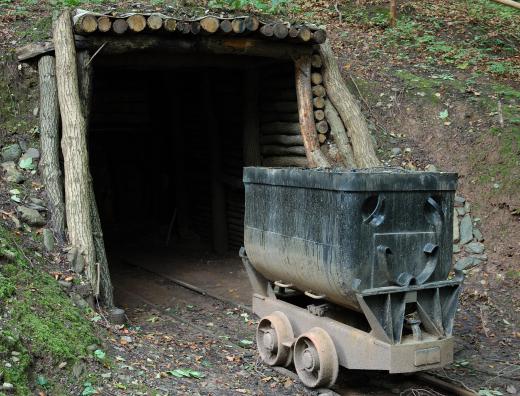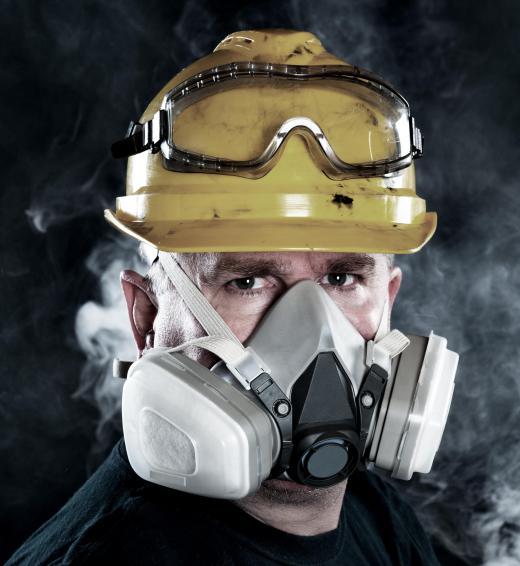Minestone is waste material left over after mining for coal deposits. Mining companies do some processing on site to limit the expense of transporting waste material, and usually a coal mine has one or more large minestone piles nearby to provide a place for storing waste until it can be removed from a site. There are a number of uses for this material, and mining companies may attempt to sell it with the goal of increasing overall profits from a given mine.
The composition of minestone depends on conditions at a coal mine. Sandstone and shale can commonly be found in the mixture, along with various muds. The mining company will process it to remove as much coal as possible, but some coal dust and fragments may be present. In some conditions, minestone piles may actually ignite as a result of coal dust suspensions and heat buildups. This can cause the materials in the heap to fuse together and calcine.

One potential use for this waste product is in the production of aggregates for making concrete and similar materials. The company can grind the stone to uniform size for this purpose, and will test it to make sure it is suitable. It is also available for use as filler and support for embankments and unstable ground. In some cases it may have contaminants. Use for contaminated materials is more limited, as they can pose an environmental and human safety risk.

Also known as colliery spoil, this material can also be deliberately burned. Burned minestone can be used in many of the same ways that plain material can. Burning will remove residues and can leave a cleaner and more compact final product. Mine personnel need to observe appropriate safety measures when burning down piles of waste material, as smoke inhalation can be dangerous, and there is also a risk of spreading the fire beyond the piles. Usually it is necessary to wear respirators to protect the lungs, and burning should be avoided in high winds or extremely dry weather.
Bankruptcies at coal companies can create a health and safety problem, as they may not be able to properly secure their waste materials. The government may intervene to address minestone and other wastes, and can recover the costs of doing so from the liquidation of the mine's assets. In some nations, the government requires carriage of insurance to cover such costs in the event of bankruptcy or other problems.
Despite the similarity in the appearance of both words, minestone should not be confused with minestrone, a soup of Italian origins that typically contains beans, vegetables, pasta, and other additions. As a general rule, minestrone lacks coal products unless the cook is using a highly unusual recipe.
Ever since she began contributing to the site several years ago, Mary has embraced the exciting challenge of being a About Mechanics researcher and writer. Mary has a liberal arts degree from Goddard College and spends her free time reading, cooking, and exploring the great outdoors.

